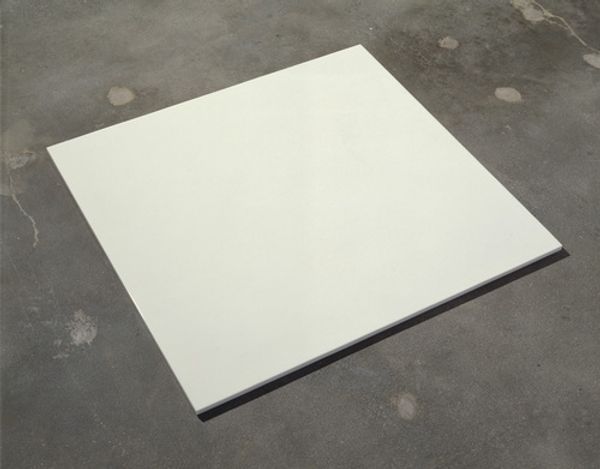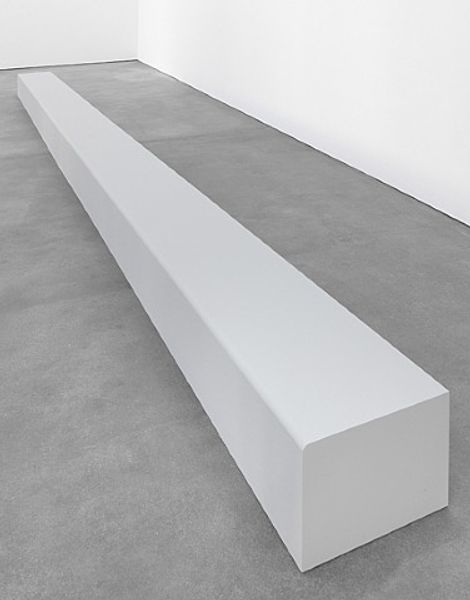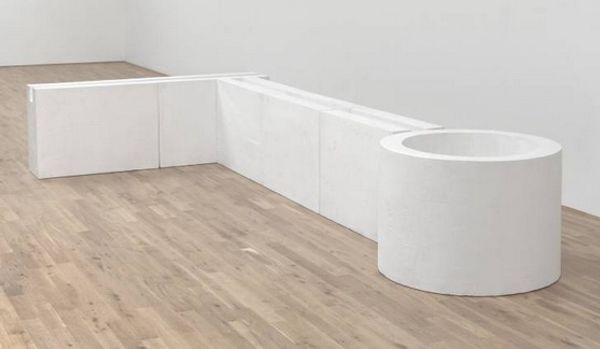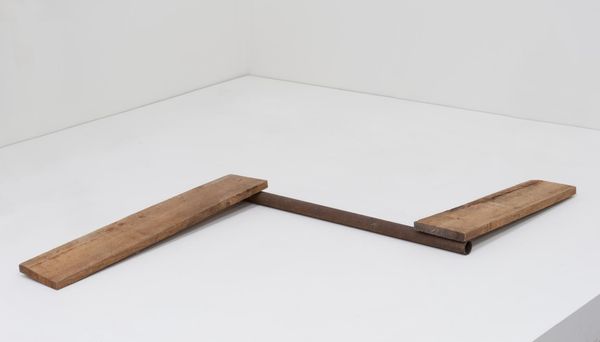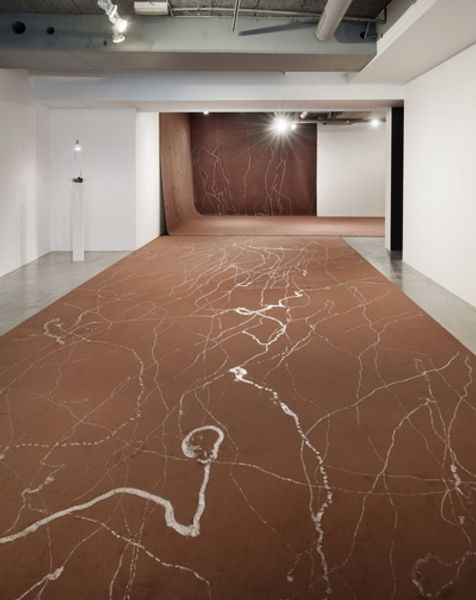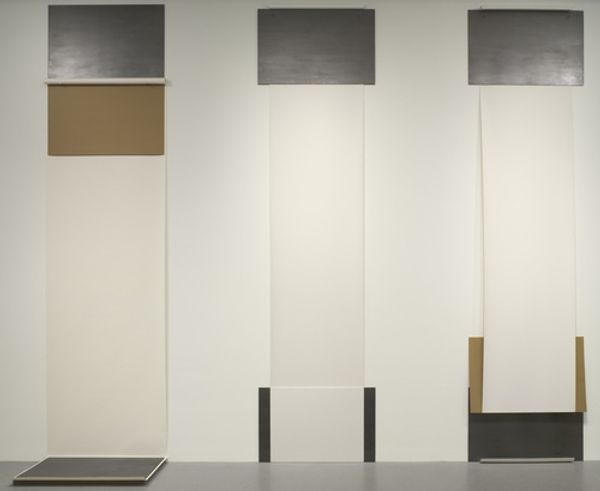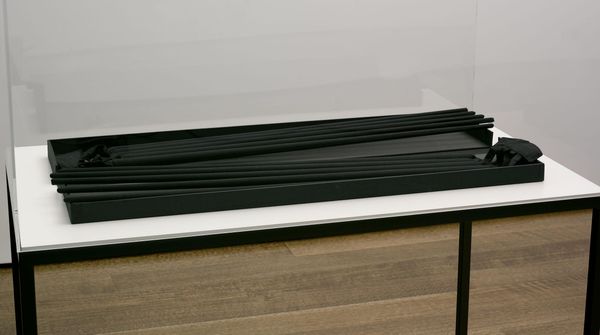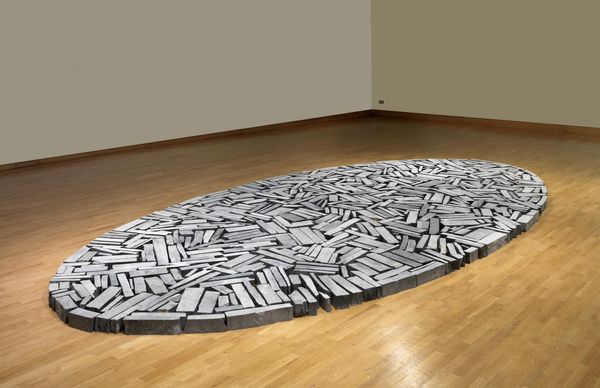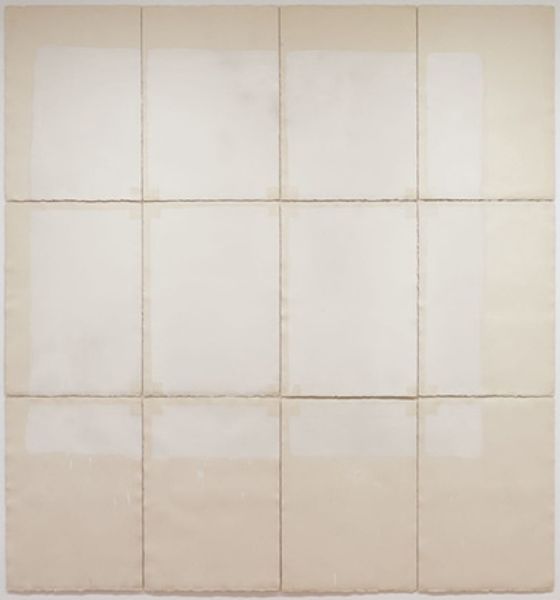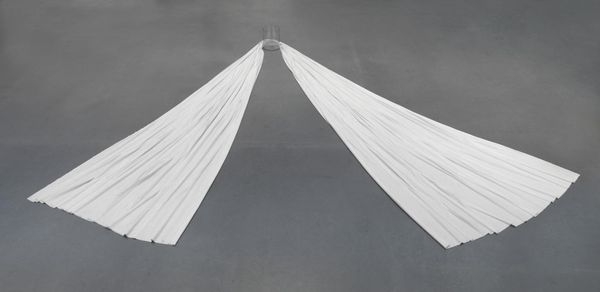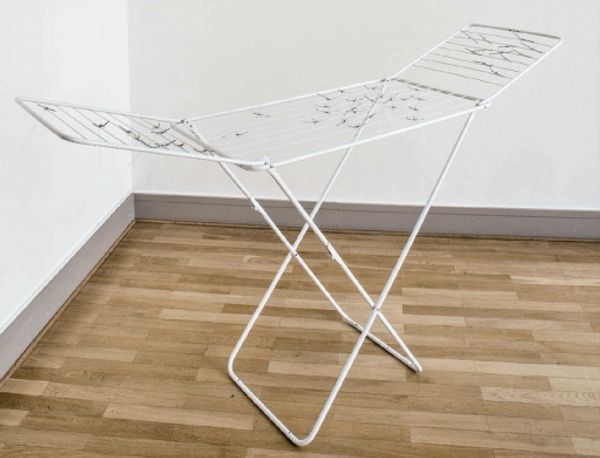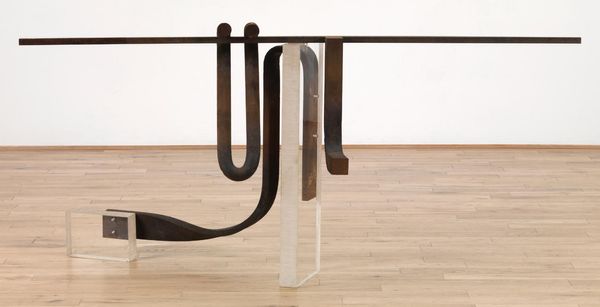
Dimensions: Overall display dimensions variable
Copyright: © Philippe Parreno, courtesy Esther Schipper, Berlin | CC-BY-NC-ND 4.0 DEED, Photo: Tate
Curator: Philippe Parreno invites us to reconsider our sense of space with his installation, "6.00 PM," currently held in the Tate Collections. It’s intriguing how the dimensions shift depending on the exhibition space. Editor: It's immediately unsettling. It looks like the world is off-kilter, a rug that’s also a trap or a threshold. Curator: I find it interesting the way the linear design on the carpet evokes the visual language of runways. An airport of sorts. Perhaps that speaks to transitions and displacement. Editor: Or maybe the idea of arrivals and departures is a clever hint. Its geometric patterns recall Art Deco, a period of immense social and artistic shifts, a fascination with modernity. Curator: It’s like he’s playing with archetypes, imbuing a domestic object with the symbolism of movement and change. Editor: Exactly. That blend of domestic and symbolic makes the carpet feel charged, as if it’s guarding a secret. Curator: It prompts me to rethink how environments shape our narratives. Editor: Me too. It makes you wonder: what stories does this carpet already know?
Comments
Join the conversation
Join millions of artists and users on Artera today and experience the ultimate creative platform.
tate 6 months ago
⋮
6.00 PM is a brown, beige and cream carpet that fills the entire floor of the room in which it is displayed. Near its centre is a large composition made up of various rectangular shapes in the three different tones, including thinner, linear forms that are the same brown colour as the area of carpet surrounding this pattern. The shapes and colours give the impression that light entering through a nearby window has cast shadows onto the floor. The two lighter brown areas on either side of the brighter cream centre suggest that the window is framed by curtains, through which the light is only partially filtered, while the darker brown linear areas mark the silhouette of the window frame. Despite these impressions, the fact that the carpet is always displayed in a windowless gallery, that the image never changes, and that people can walk across the work and leave marks on its surface, makes it unlikely that viewers would be fooled by the illusion.
